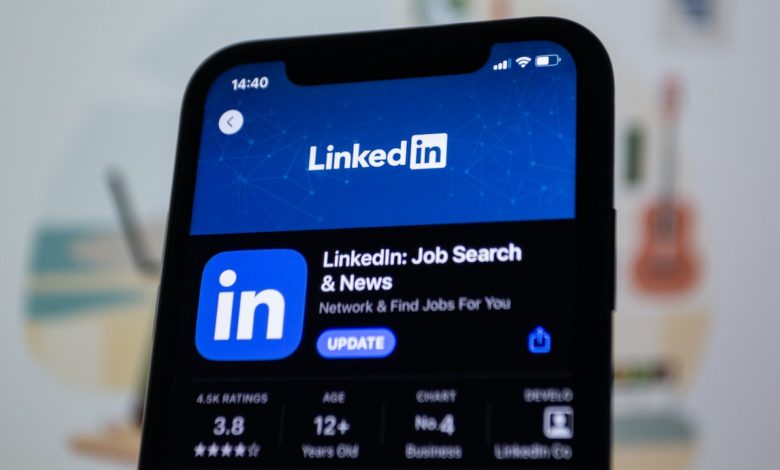
LinkedIn’s Unfulfilled Promises
The monolith that is LinkedIn purports to be a one-stop-shop for all your professional aspirations. But the more time you spend on the platform, the more it feels like you’re trapped in a never-ending cycle of scrolling, connecting, and, most frustratingly, missing out on real opportunities. Here’s why LinkedIn needs a substantial overhaul or, better yet, a full-fledged replacement.
The Broken Algorithm: A Closer Look
LinkedIn’s algorithm, which was supposed to be the heartbeat of the platform, is, unfortunately, less of a matchmaker and more of a troublemaker. Remember, it’s not just about the annoyance of getting unrelated job alerts. This system has serious repercussions for both employers and job seekers.
A well-designed algorithm should be able to differentiate between relevant and irrelevant content. LinkedIn’s system appears to fall short in this respect. One major complaint from users is that their job alert algorithm spews out job opportunities completely unrelated to their field or expertise. It’s as if the algorithm doesn’t comprehend the basic tenets of job matching, which, for a platform built on professional networking, is nothing short of a scandal. In my personal experience (during my job search), I had to, finally, turn off my “job alerts” altogether because 60-70% of those jobs had nothing to do with my background. Fun fact – I landed my new opportunity away from LinkedIn, on a different platform.
According to a survey conducted by Glassdoor, 76% of hiring decision-makers say attracting quality candidates is their #1 challenge. When a platform as gigantic as LinkedIn can’t accurately match candidates to jobs, it exacerbates this issue. Job seekers miss out on roles that could fit them like a glove, while recruiters sift through a haystack of irrelevant applications. It’s a lose-lose situation that fundamentally questions the platform’s efficacy. If the platform wishes to retain its relevance, it has no choice but to address these glaring issues.
The Vanity Metrics: Connections over Substance?
The concept of ‘connections’ in the LinkedIn universe is an inflated currency that is losing its value. When LinkedIn first launched, the idea was revolutionary—never before had it been so easy to connect with industry leaders and potential employers. But what was once a meaningful metric has now become a vanity score, providing little more than a superficial sense of accomplishment.
Researchers at the University of California, Irvine, found that although LinkedIn users with more connections feel a greater sense of community, this doesn’t necessarily translate into career advantages. We need a system that goes beyond the surface, providing nuanced, meaningful networking opportunities.
During my recent job hunt, I took the proactive step of contacting eight individuals in my LinkedIn network, providing them with specific job links and asking for a referral within their companies. The outcome? A resounding silence from all eight. Needless to say, those individuals have since been removed from my network. What value do such connections offer if they can’t even engage on a professional courtesy level?
Irrelevant Content: The Flood
We all know that person who uses LinkedIn as their personal blogging platform, sharing posts and articles that have nothing to do with professional development. In fact, according to a report by the Content Marketing Institute, only 42% of B2B marketers believe their LinkedIn content efforts are successful. The algorithm should know better than to bombard us with off-topic posts. Yet, it happens all the time.
In a platform designed to connect professionals and facilitate career growth, one would expect the focus to be on, well, professional content. But what greets users is an increasingly bizarre potpourri of irrelevant posts. Humble brags such as “I wish I could just give my books away for free” simply do not serve any purpose. Pictures of someone’s dog dressed for Halloween might evoke an “aww,” but how does that relate to job-seeking or professional development? You might also stumble upon posts that document someone’s vacation in stunning detail, rivalling the escapades seen on Instagram. Sure, it’s human to share life milestones, but is LinkedIn the appropriate platform for that?
The frequency of these misplaced posts is not just a minor irritant; it’s a significant distraction that blunts the efficacy of the platform. If you’re logging in to learn about the latest in, say, machine learning algorithms and instead get sidetracked by someone’s birthday bash photos or a post about their culinary adventures or gym photos, the platform’s utility comes into question.
The Memefication of Professionalism: When Less Becomes Too Little
In today’s fast-paced digital age, our attention spans have shrunk. To cater to this, LinkedIn, like many other social platforms, has seen a surge in meme-style posts. These posts often take complex ideas and reduce them to catchy one-liners or over-simplified visuals. While memes might be amusing and easily digestible, their proliferation on a platform designed for professional development is questionable.
The crux of the issue is not just that meme-style posts are trivial or distracting, but that they actively encourage a culture that devalues depth and nuance. By championing this “bite-size” culture, LinkedIn unwittingly promotes a shallow point of view that can be detrimental not just to individual professional growth, but to societal culture at large.
Imagine you’re a recruiter or an employer scrolling through LinkedIn, and all you see are memes suggesting that “success is just one good idea away” or “the only skill you need is to be a people person.” These snippets, devoid of context or elaboration, perpetuate myths about career development and success that can be misleading for those entering the workforce. Furthermore, the bite-size culture contributes to a broader social phenomenon of increasingly polarized and uninformed opinions, as people are less exposed to detailed arguments or multifaceted perspectives.
As memes replace meaningful discussion, and soundbites overtake substantive dialogue, LinkedIn needs to question whether it’s still serving its intended purpose of being a conduit for professional advancement. If it wishes to reclaim that role, it’s imperative to reverse this trend and refocus on fostering meaningful, in-depth interactions.
Crossing the Line: Professionalism at Stake
While LinkedIn was originally designed to be a sanctum for professional interactions, what we’re seeing today is far from that ideal. The lines between personal and professional are not just blurred but are often crossed altogether. It’s not uncommon to scroll through your feed and come across pictures of someone’s new puppy, their child’s birthday party, or even a snapshot from their latest tropical vacation. These posts, while heartwarming or entertaining in a different context, are distracting and dilute the platform’s primary objective.
But it doesn’t stop there. You might think that puppy posts are harmless, but this casual attitude fosters an environment where boundaries continue to be pushed. There’s a darker underbelly, one of unsolicited messages, even outright harassment. Imagine you’re a young professional, you log in hoping to network or find job opportunities, and instead, you’re greeted with inappropriate comments or proposals. This is not a hypothetical scenario; it happens more often than one might think.
A 2019 survey by Pew Research Center showed that 21% of women between 18 and 29 have been sexually harassed online, and platforms like LinkedIn are not immune to this behavior. The ‘Report’ and ‘Block’ features seem like a band-aid on a bullet wound. For a platform that boasts about its utility for career development, this is unacceptable. What we need are proactive measures, rigorous content monitoring, and robust privacy settings to make LinkedIn a secure and professional platform.
The reality is, the more LinkedIn allows these lapses in professionalism, the more it undermines its stated purpose. It becomes less a tool for career advancement and more an open field for misunderstandings, missteps, and misconduct. It’s high time that LinkedIn either steps up its game in enforcing professional decorum or steps aside for a platform that will.
The Mirage of LinkedIn Premium
The allure of LinkedIn Premium can be tempting for job seekers and networking enthusiasts alike. With its promise of exclusive access to job insights, an expanded network, and priority in recruiter searches, Premium can appear as a golden ticket to professional success. Yet, when we pull back the curtain and examine its efficacy, the reality paints a different picture.
According to a 2020 study by the Society for Human Resource Management (SHRM), only 13% of recruiters saw a substantial benefit in using LinkedIn Premium during the hiring process. This raises the question: If recruiters, the very people you’re trying to impress, find minimal value in the premium service, what’s in it for the average job seeker? You’d think that for a service which can cost up to $59.99 per month, depending on the plan, there would be more solid backing for its effectiveness.
Furthermore, many of the features that LinkedIn Premium boasts—like “Who’s Viewed My Profile” and InMail capabilities—are not necessarily game changers for the typical user. Most recruiters are more impressed by a well-curated, active profile and quality referrals than whether you can send them a direct message. It becomes apparent that LinkedIn Premium, rather than being a professional game-changer, is more like an expensive ornament—nice to have, but far from essential.
The Road Ahead: Building a Better Platform
Instead of limping along with a flawed system, it’s time to envision a new platform—one that genuinely serves the modern-day job seeker and recruiter.
- Direct and Relevant Recruiter Contact: This would not only streamline the application process but would also make it more effective. A focused platform where recruiters actively participate can transform the entire landscape.
- Advanced, Tailored Algorithms: We’re in the age of AI and machine learning. It’s high time employment platforms utilized this technology to provide customized experiences that benefit both job seekers and employers.
- Strict Content Monitoring: We need a platform where the content is strictly professional and offers real value, from industry insights to skill-building advice.
- Secure, Professional Environment: It’s imperative to maintain a professional atmosphere where users can interact without fear of harassment or inappropriate behavior.
The Verdict: Time for a Change
LinkedIn may have pioneered the concept of online professional networking, but it’s clear that the platform is falling short on many fronts. Whether it’s the inaccurate job matching, the waning importance of connections, or the flood of irrelevant content, LinkedIn is ripe for disruption. And as we move into an increasingly digital future, settling for anything less than excellence in our professional tools is not just unwise—it’s unacceptable.




